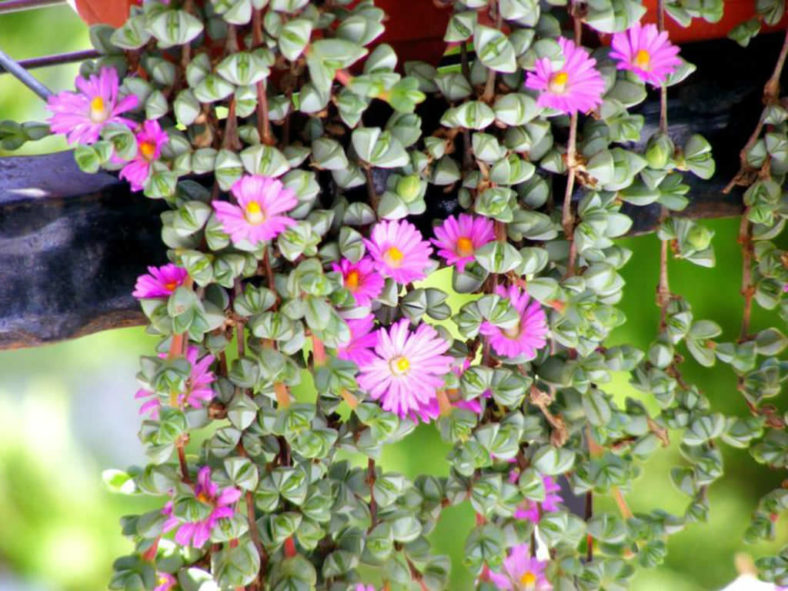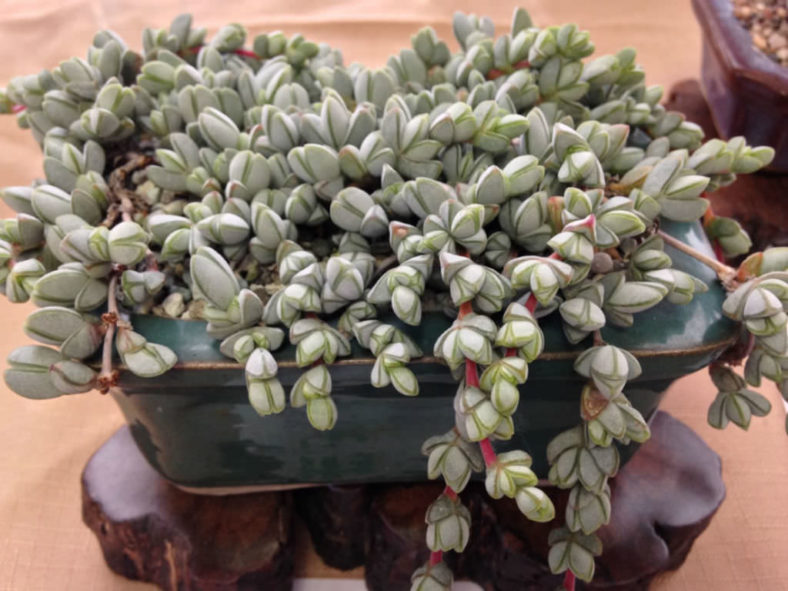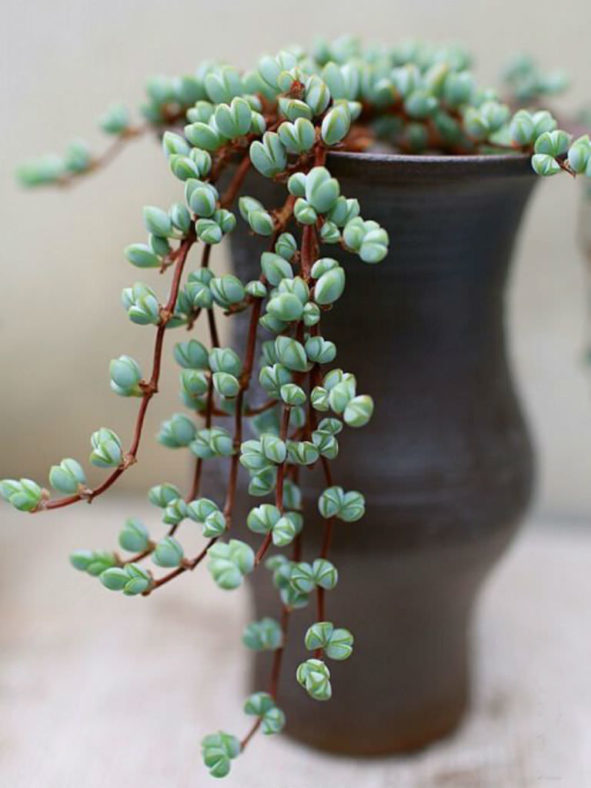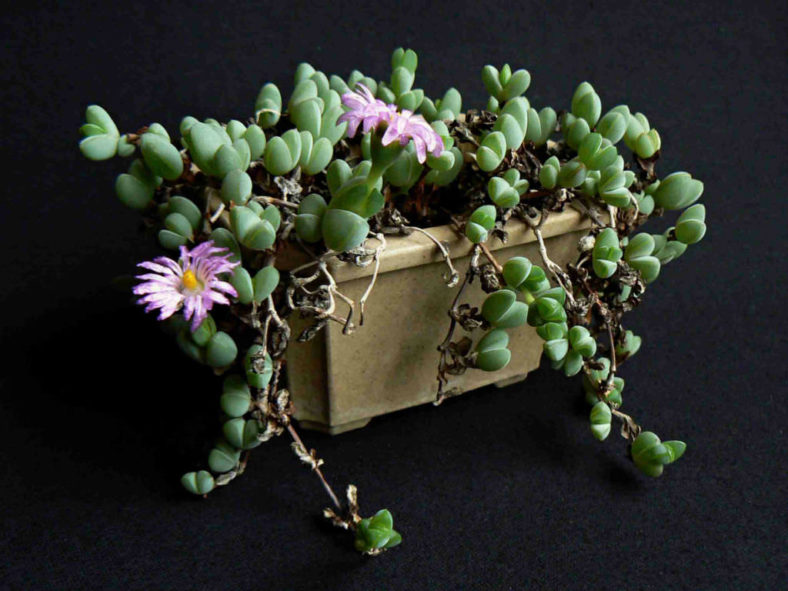Scientific Name
Braunsia maximiliani (Schltr. & Berger) Schwantes
Common Name(s)
Beads Lampranthus
Synonym(s)
Echinus maximiliani, Lampranthus maximiliani, Mesembryanthemum maximiliani
Scientific Classification
Family: Aizoaceae
Subfamily: Ruschioideae
Tribe: Ruschieae
Genus: Braunsia
Origin
Braunsia maximiliani is native to South Africa. It occurs from Piquetberg through Clanwilliam to Vanrhynsdorp in the Western Cape province.
Description
Braunsia maximiliani, also known as Lampranthus maximiliani, is a beautiful succulent shrublet that blooms early in the year with quite large, rose-colored flowers. The branches are trailing and can grow up to 7 inches (17.5 cm) long, rooting at nodes. The leaves are grey-green, boat-shaped, triangular in cross-section, fused for a third of their length, and can measure up to 0.4 inches (1 cm) long.
The flowers appear in late winter. They are solitary, terminal, and can reach a diameter of 0.9 inches (2.2 cm).

How to Grow and Care for Braunsia maximiliani
Hardiness: USDA hardiness zone 9a to 11b: from 20°F (-6.7°C to 50°F (10°C).
Braunsias are moderately slow-growing succulents. It needs moderate water during late fall and early spring. Keep the soil somewhat dry the rest of the time. Like all living rocks, they thrive in porous, well-drained soils. It can tolerate high heat and some frost (hardy to 23°F (-5°C) or less if very dry). Braunsias are very rewarding succulents and can be cultivated in desert gardens in warm climates, greenhouses, or on windowsills in places with cold, wet winters. Enjoy the bright shade in summer and the full sun in the other seasons.
They are easily propagated by seed and cuttings.
See more at How to Grow and Care for Braunsia.
Links
- Back to genus Braunsia
- Succupedia: Browse succulents by Scientific Name, Common Name, Genus, Family, USDA Hardiness Zone, Origin, or cacti by Genus
Photo Gallery
Click on a photo to see a larger version.


